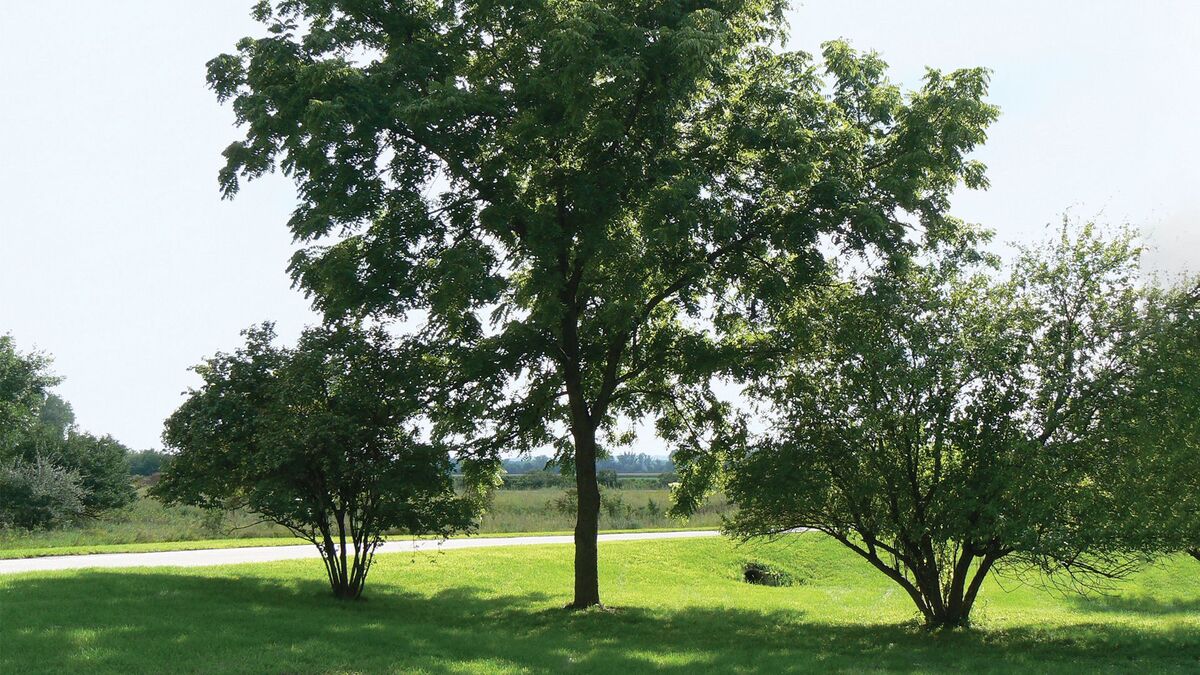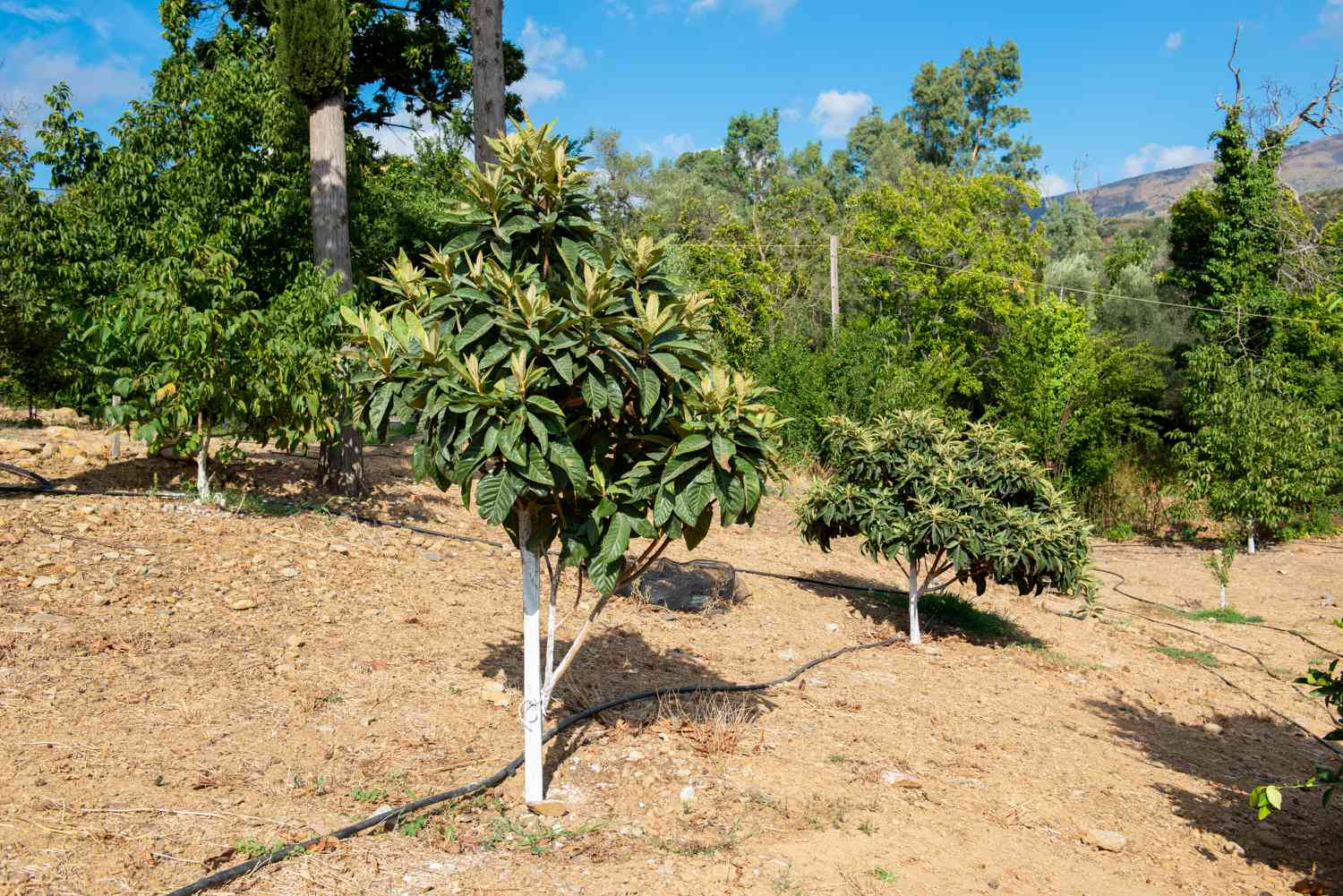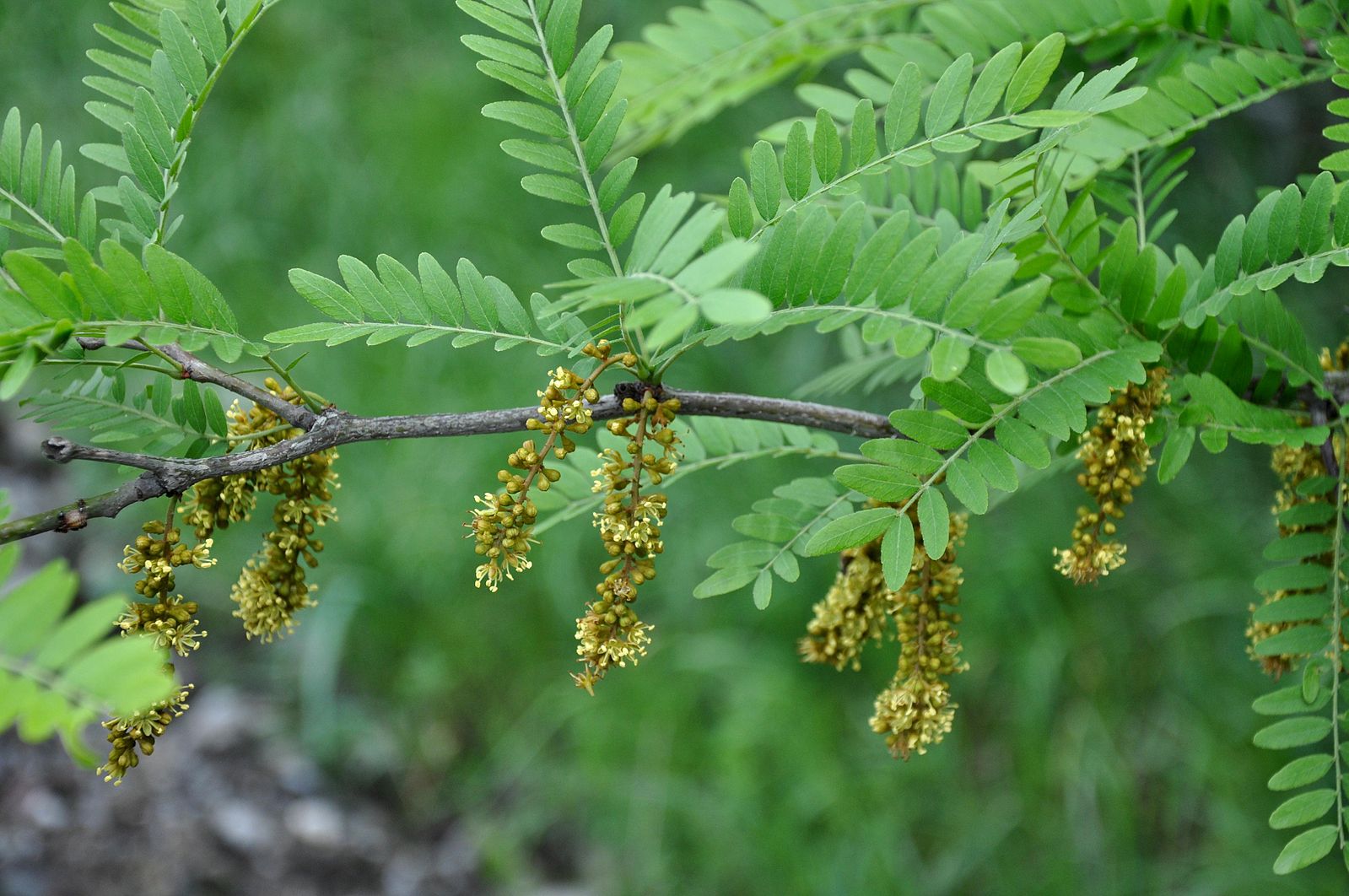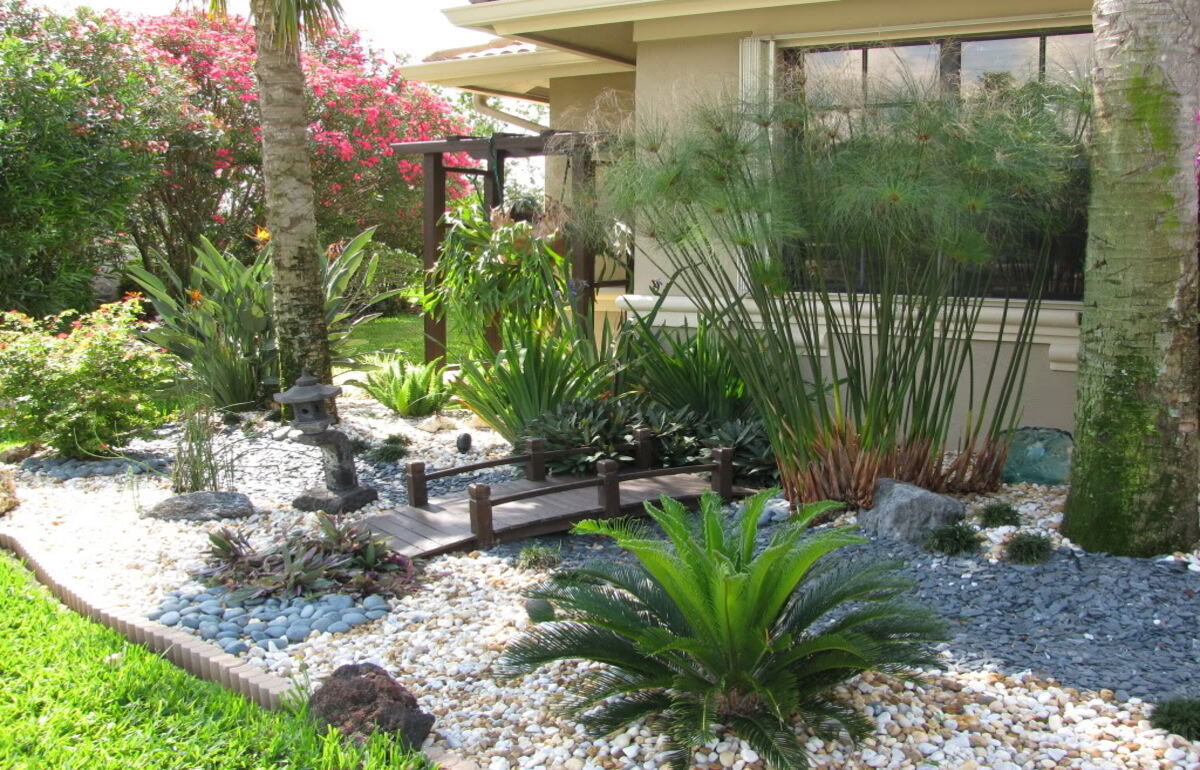Home>Gardening Techniques>DIY Projects>How To Compost Wood Chips Fast
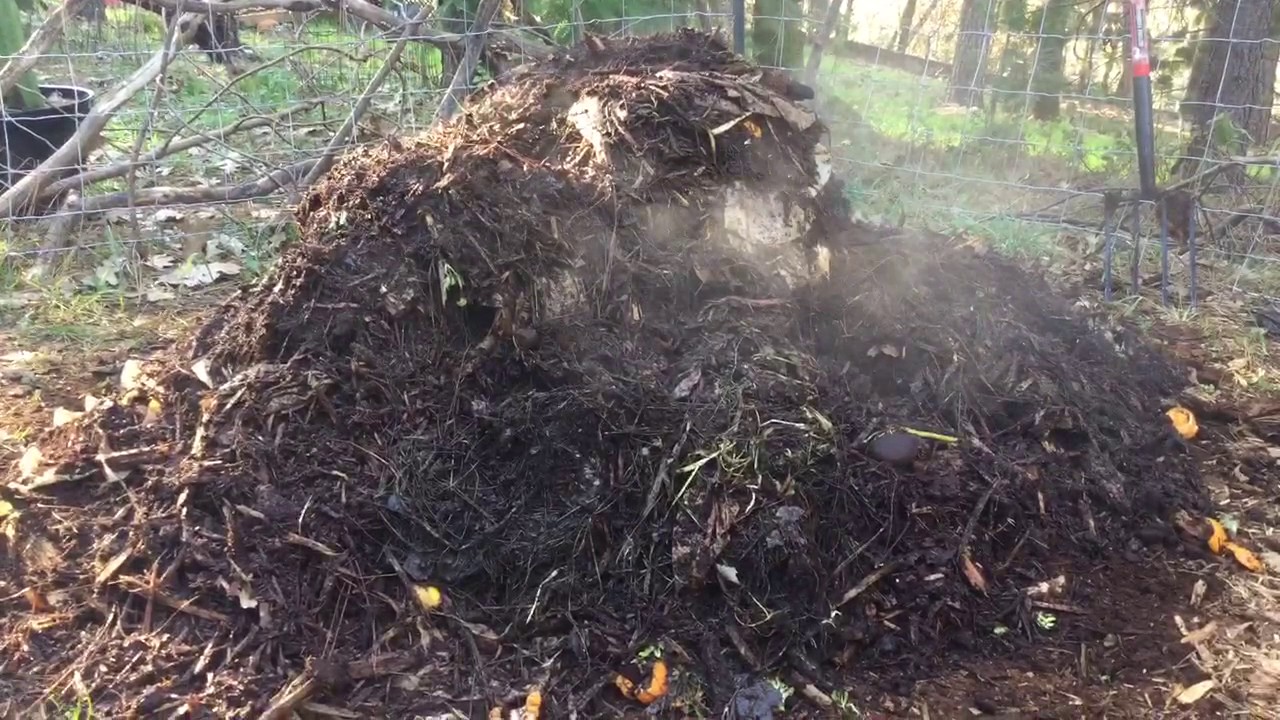

DIY Projects
How To Compost Wood Chips Fast
Modified: January 22, 2024
Learn how to speed up the composting process of wood chips with these DIY projects. Transform your garden waste into nutrient-rich compost quickly.
(Many of the links in this article redirect to a specific reviewed product. Your purchase of these products through affiliate links helps to generate commission for Chicagolandgardening.com, at no extra cost. Learn more)
Table of Contents
- Introduction
- Benefits of Composting Wood Chips
- Selecting the Right Wood Chips
- Preparing the Compost Area
- Layering Wood Chips in the Compost Pile
- Adding Nitrogen-Rich Materials
- Turning and Moistening the Compost Pile
- Monitoring the Temperature and Moisture Levels
- Troubleshooting Common Issues
- Harvesting and Using Composted Wood Chips
- Conclusion
Introduction
Welcome to the world of DIY projects! If you’re someone who enjoys getting your hands dirty and taking on new challenges, then you’re in the right place. DIY projects are a great way to unleash your creativity, save money, and make your living space more personalized. From simple home improvements to complex woodworking projects, there’s something for everyone.
Embarking on a DIY project can be both exciting and overwhelming. There’s a vast array of ideas and resources available, but knowing where to start can be tricky. That’s where this comprehensive guide comes in. Whether you’re a seasoned DIY enthusiast or a beginner looking to dip your toes into the world of DIY, we’ve got you covered.
In this article, we’ll explore various DIY projects that span across different skill levels and areas of interest. From basic maintenance and repair tasks to transforming your living space with creative home decor, this guide will provide you with the inspiration and knowledge you need to tackle your next project.
Not only will we delve into the world of DIY, but we’ll also share tips and tricks to ensure that your projects are successful. We’ll cover everything from choosing the right tools and materials to mastering essential techniques. Additionally, we’ll offer advice on safety precautions and how to troubleshoot common issues that may arise during the process.
While DIY projects can be a fun and rewarding experience, they also offer numerous benefits. By taking on these projects yourself, you’ll have the opportunity to enhance your skills, save money on labor costs, and create unique and personalized items that reflect your style and taste.
So, whether you’re planning to revamp your living room, build a bookshelf from scratch, or create a stunning outdoor oasis, get ready to unleash your inner DIY guru. With this comprehensive guide and your can-do attitude, there’s no project too big or small that you can’t tackle. Let’s dive into the world of DIY and start turning your visions into reality!
Benefits of Composting Wood Chips
Composting wood chips is not only a sustainable way to manage yard waste, but it also offers numerous benefits for your garden and the environment. Let’s explore the advantages of composting wood chips:
1. Organic Soil Amendment: Composted wood chips have a high carbon content, making them an excellent source of organic matter for improving soil fertility. When added to the soil, the composted wood chips break down slowly, releasing nutrients and enhancing its overall structure. This results in healthier and more productive plants.
2. Moisture Retention: Wood chips have the ability to retain moisture in the soil, which is especially beneficial in dry or arid climates. As the wood chips break down, they release moisture gradually, reducing the need for frequent irrigation and conserving water.
3. Weed Suppression: Applying a layer of composted wood chips to the soil surface helps suppress the growth of weeds by creating a physical barrier. This helps to minimize weed competition and reduces the need for chemical herbicides.
4. Erosion Control: Composted wood chips can be used as a natural erosion control method. By covering bare soil areas with a layer of wood chips, they help prevent soil erosion caused by wind and water runoff, providing stability to slopes, and protecting your garden from damage.
5. Nutrient Recycling: When you compost wood chips, you are recycling organic material that would otherwise end up in landfills. By diverting these materials from the waste stream, you contribute to reducing greenhouse gas emissions and promoting a more sustainable environment.
6. Cost Savings: Composting wood chips reduces the need to purchase expensive synthetic fertilizers and soil amendments. By utilizing organic compost, you can save money while improving the overall health of your garden.
7. Environmental Benefits: Composting wood chips is a natural and environmentally friendly way to dispose of yard waste. It helps to reduce landfill waste and minimizes the production of methane gas, a potent greenhouse gas generated by decomposing organic material in landfills.
8. Biodiversity Support: Composted wood chips provide a habitat for beneficial microorganisms and earthworms, which play a vital role in maintaining soil health. These organisms break down organic matter, enhance nutrient availability, and improve soil structure, creating an optimal environment for plant growth.
By composting wood chips, you can harness these benefits to create a thriving, sustainable garden while minimizing your environmental impact. Remember, healthy soil is the foundation of a successful garden, and composting wood chips is a valuable tool in achieving that goal!
Selecting the Right Wood Chips
When it comes to composting wood chips, selecting the right type of wood and ensuring proper preparation is key to successful decomposition and nutrient-rich compost. Here are some factors to consider when choosing wood chips for composting:
1. Hardwood vs. Softwood: Both hardwood and softwood can be used for composting; however, hardwoods like oak, maple, and beech are preferred due to their dense fiber structure and slower decomposition rate. Softwoods like pine and spruce can also be used but may break down more quickly.
2. Avoid Chemically Treated Wood: It’s crucial to avoid using chemically treated or pressure-treated wood chips for composting. These contain harmful toxins, such as arsenic and heavy metals, which can contaminate the soil and the plants grown in it. Stick to untreated wood chips to ensure a safe and organic composting process.
3. Size of Wood Chips: Wood chips should be of a consistent size for efficient composting. Ideally, they should be no larger than 2 to 3 inches in diameter. Smaller wood chips provide a larger surface area for microbial activity and decomposition.
4. Fresh vs. Aged Wood Chips: Freshly cut wood chips can contain high levels of carbon and may take longer to break down. Aged or partially decomposed wood chips, on the other hand, have a higher nitrogen content and decompose more readily. Consider using a mix of fresh and aged wood chips for a balanced compost blend.
5. Source of Wood Chips: Ensure that the wood chips you use come from a reliable and sustainable source. Avoid using wood chips from diseased or infested trees, as they can introduce pests or pathogens to your compost pile. Additionally, be cautious of using wood chips from trees sprayed with herbicides or pesticides.
6. Proper Storage: If you are sourcing wood chips from a tree removal service or a local arborist, it’s important to store them properly to prevent them from rotting or becoming infested with pests. Store the wood chips in a covered area with good air circulation, allowing them to dry out and age, if necessary.
By carefully selecting the right wood chips for composting, you set the foundation for a successful composting process. Remember, using untreated hardwood chips of the right size and quality from a reliable source will result in nutrient-rich compost that will nourish your garden and promote healthy plant growth.
Preparing the Compost Area
Before you start composting wood chips, it’s essential to prepare a designated compost area to ensure optimal decomposition and manage the composting process effectively. Here are the steps to prepare your compost area:
1. Choosing the Location: Select a well-drained area in your yard that receives ample sunlight. Composting works best in a location that is easily accessible for adding and turning the compost pile. Avoid placing the compost pile too close to structures or trees, as they can hinder air circulation and create potential maintenance issues.
2. Size of the Compost Area: The size of your compost area will depend on the quantity of wood chips and organic materials you plan to compost. A compost area that is at least 3 feet by 3 feet (about 1 meter by 1 meter) will provide sufficient space to accommodate a compost pile and allow for proper heat retention and airflow.
3. Clearing the Area: Remove any grass, weeds, or debris from the chosen location to create a clean surface for your compost pile. This will prevent unwanted vegetation from competing with the composting process and ensure the area is ready for the wood chips and other compost materials.
4. Adding a Base Layer: Start by adding a layer of twigs or coarse material at the bottom of your compost area. This will create aeration and drainage space, helping to prevent the compost pile from becoming waterlogged and facilitating the movement of air through the pile.
5. Containment Options: Consider using a compost bin or constructing a compost enclosure with wire mesh or wooden pallets to contain the compost pile. While not essential, these structures can help keep the compost pile tidy and make it easier to manage.
6. Accessibility and Convenience: Ensure that your compost area is easily accessible with enough space around it for maneuvering and turning the compost pile. Having tools, such as a pitchfork or compost turning tool, nearby will make the composting process more efficient and convenient.
7. Consideration of Odor and Aesthetics: Keep in mind that composting can generate odors, especially if the compost pile becomes too wet or contains materials that are slow to decompose. Consider the proximity of the compost area to your living space and your neighbors’ properties, and take measures to minimize any potential odors.
By properly preparing the compost area, you create an environment that promotes efficient decomposition and effective management of your compost pile. Remember to ensure adequate drainage, clear the area, and consider containment options to set the stage for successful composting of your wood chips and other organic materials.
Layering Wood Chips in the Compost Pile
Properly layering wood chips in your compost pile is essential for achieving efficient decomposition and creating nutrient-rich compost. The layering technique promotes airflow, balances the carbon-to-nitrogen ratio, and encourages the growth of beneficial microorganisms. Here’s how to layer wood chips in your compost pile:
1. Start with a Base Layer: Begin by adding a layer of coarse, bulky materials such as twigs or small branches at the bottom of the compost pile. This helps with aeration and drainage, preventing the pile from becoming compacted and waterlogged.
2. Add a Layer of Wood Chips: Place a layer of wood chips on top of the base layer, ensuring an even distribution. The thickness of the wood chip layer can vary, but aim for around 4 to 6 inches (10 to 15 centimeters). This layer provides a carbon-rich component that helps create a balanced carbon-to-nitrogen ratio in the compost pile.
3. Incorporate Green Nitrogen-Rich Materials: Add a layer of nitrogen-rich green materials on top of the wood chips. This can include fresh grass clippings, vegetable scraps, or garden trimmings. These materials help activate the composting process by providing essential nitrogen that aids microbial activity and decomposition.
4. Alternate Layers: Continue layering wood chips and nitrogen-rich materials, creating alternating layers until you have used up all your compostable materials. Remember to maintain the carbon-to-nitrogen ratio, aiming for a ratio of roughly 30:1. This balance promotes proper decomposition and prevents the compost pile from becoming too nitrogen-rich or carbon-heavy.
5. Moisten Each Layer: As you add each layer, lightly moisten it with water. The moisture helps facilitate the breakdown of materials and prevents the compost pile from becoming too dry. The wood chips should be damp, but not overly wet. Aim for a moisture level similar to a wrung-out sponge.
6. Finish with a Carbon-Rich Layer: Once you have added all the wood chips and nitrogen-rich materials, finish the compost pile with a final layer of carbon-rich materials, such as dried leaves, straw, or shredded paper. This layer acts as a cover, helping to retain moisture and insulate the compost pile.
7. Repeat the Layering Process: If you have excess wood chips to compost, repeat the layering process with additional layers of wood chips and nitrogen-rich materials until all the materials have been utilized.
8. Water and Monitor: After layering the wood chips, water the compost pile thoroughly, ensuring all layers are moist. Throughout the composting process, monitor the moisture levels regularly and adjust as needed, aiming for a moist, but not saturated, environment.
By layering wood chips in your compost pile, you create a balanced environment that promotes efficient decomposition and the formation of high-quality compost. This layering technique ensures proper carbon-to-nitrogen ratios, encourages beneficial microbial growth, and provides the foundation for a successful composting process.
Adding Nitrogen-Rich Materials
When composting wood chips, it’s essential to introduce nitrogen-rich materials to balance the carbon-to-nitrogen ratio in your compost pile. Nitrogen-rich materials, also known as green materials, provide the necessary nutrients for microbial activity and help accelerate the decomposition process. Here’s how to effectively add nitrogen-rich materials to your compost pile:
1. Kitchen Scraps: Vegetable peelings, fruit scraps, coffee grounds, and tea bags are excellent sources of nitrogen. Collect these materials in a separate container in your kitchen and regularly add them to your compost pile. Avoid adding meat, fish, dairy products, or oily food waste, as these can attract pests and create unpleasant odors.
2. Grass Clippings: Fresh grass clippings are nitrogen-rich and provide a readily available source of organic matter. Add a thin layer of grass clippings to your compost pile, ensuring they are spread evenly and not clumped together. If you have a large amount of grass clippings, it’s best to let them dry out first, as fresh clippings can create a compacted and smelly pile.
3. Plant Trimmings: When pruning or trimming plants in your garden, utilize the trimmings as nitrogen-rich materials for your compost pile. Chop or shred larger branches or stems to speed up the decomposition process. Avoid using diseased or pest-infested plant materials, as this can introduce pathogens into the compost pile.
4. Fresh Weeds: Weeds that have not yet gone to seed can also be added to your compost pile. However, be cautious when using weeds with persistent roots or seeds to avoid potential re-infestation in your garden. Avoid adding weeds that have gone to seed, as this can spread weed seeds throughout your compost and garden.
5. Manure: Animal manures, such as cow, horse, or chicken manure, are rich in nitrogen and can greatly enhance your compost pile. However, it’s important to use well-aged or composted manure to avoid introducing harmful pathogens. Mix manure with other compost materials to ensure a well-balanced and odorless compost pile.
6. Nitrogen supplements: In addition to organic nitrogen-rich materials, you can also introduce nitrogen supplements such as blood meal, fish meal, or alfalfa meal to your compost pile. These supplements provide a concentrated source of nitrogen, ensuring a healthy balance in your compost pile.
7. Proper Mixing: As you add nitrogen-rich materials to your compost pile, aim for an even distribution and mix them with the existing layers of wood chips. This helps to prevent clumping and allows for better airflow and decomposition.
8. Maintenance: To maintain a proper carbon-to-nitrogen ratio, continue adding nitrogen-rich materials as you accumulate them. Aim for a balanced ratio of approximately 30 parts carbon to 1 part nitrogen in your compost pile.
By adding nitrogen-rich materials to your compost pile, you ensure a well-balanced and nutrient-rich environment for decomposition. These materials provide the necessary nutrients for microbial activity, helping to break down the wood chips and other organic matter effectively. With the proper addition of nitrogen-rich materials, you’ll be on your way to creating high-quality compost for your garden.
Turning and Moistening the Compost Pile
Turning and moistening the compost pile are crucial steps in the composting process, as they help maintain optimal conditions for decomposition and accelerate the breakdown of organic matter, including wood chips. Here’s how to effectively turn and moisten your compost pile:
1. Turning the Compost Pile: Regularly turning the compost pile helps distribute oxygen, encourages microbial activity, and promotes even decomposition. Use a pitchfork or a compost turning tool to gently lift and flip the materials from the outer edges of the pile into the center.
2. Frequency of Turning: Ideally, turn the compost pile every 2-3 weeks. However, if you notice a strong odor or find the pile too wet or dry, more frequent turning may be necessary. Turning more often ensures that all the materials receive adequate oxygen and helps prevent the pile from becoming compacted or anaerobic.
3. Moistening the Compost Pile: Maintaining proper moisture levels is crucial for the composting process. The compost pile should be moist, like a damp sponge, but not waterlogged. If the pile is too dry, sprinkle water as you turn it to add moisture. If the pile is too wet, add dry carbon-rich materials like dried leaves or shredded paper to absorb excess moisture.
4. Monitoring Moisture Levels: Regularly monitor the moisture content of your compost pile by squeezing a handful of the composting materials. If water only drips out and the pile feels saturated, it is too wet. If the material feels dry and crumbles easily, it is too dry. Adjust moisture levels accordingly to ensure a proper balance.
5. Maintaining Airflow: As you turn the compost pile, be sure to create air channels within the pile. These channels allow oxygen to reach the microorganisms responsible for decomposition. Avoid packing the materials too tightly, as this restricts airflow and hinders the composting process.
6. Considerations during Turning: While turning the compost pile, take note of any materials that are not breaking down properly or any foul odors. Large pieces of wood chips or other organic matter may need further shredding or chopping to speed up decomposition. Foul odors can indicate a lack of oxygen or excess moisture, so adjust your turning and watering techniques accordingly.
7. Maintaining a Compost Thermometer: Using a compost thermometer can help you monitor the internal temperature of the compost pile. Aim for a temperature between 130-160°F (54-71°C) during active decomposition. Turning the pile helps distribute heat evenly and prevents the pile from overheating.
By regularly turning and moistening your compost pile, you create favorable conditions for microbial activity, ensuring efficient decomposition of the wood chips and other compost materials. These simple steps help maintain oxygen levels, moisture balance, and facilitate the breakdown of organic matter, resulting in nutrient-rich compost for your garden.
Monitoring the Temperature and Moisture Levels
Monitoring the temperature and moisture levels of your compost pile is essential for successful composting, including the decomposition of wood chips. Proper monitoring ensures the ideal conditions for microbial activity, decomposition, and the production of nutrient-rich compost. Let’s explore how to effectively monitor the temperature and moisture levels:
1. Temperature Monitoring: Use a compost thermometer to measure the internal temperature of the compost pile. Insert the thermometer into the center of the pile, avoiding any metal or plastic components. The temperature of a well-maintained compost pile should range between 130-160°F (54-71°C).
2. Understanding Temperature Changes: When composting wood chips, the temperature of the pile will rise during the active decomposition phase. Microbes generate heat as they break down the organic matter. Monitor the temperature regularly, as extremely high temperatures (above 160°F/71°C) may indicate that the pile is too dry or that there is an excessive amount of carbon-rich materials, such as wood chips, present in the pile.
3. Moisture Monitoring: Regularly assess the moisture content of your compost pile. The materials should be moist, like a damp sponge. A lack of moisture can slow down the decomposition process, while excessive moisture can lead to a foul odor or the development of anaerobic conditions. Squeeze a handful of the materials to determine if the moisture level is appropriate.
4. Adjusting Moisture Levels: If the compost pile is too dry, lightly water it as you turn it to increase moisture levels. Use a hose with a misting nozzle or a watering can to evenly distribute water throughout the pile. If the pile is too wet, add dry carbon-rich materials like dried leaves, straw, or shredded paper to absorb excess moisture and improve aeration.
5. Maintaining the Ideal Moisture Balance: The key is to strike a balance between moisture and air. Optimal moisture levels facilitate microbial activity and decomposition. Regularly check the moisture content by feeling the compost materials and adjust accordingly by adding water or dry materials.
6. Considering the Composting Process: During the active decomposition phase, the compost pile will naturally heat up, indicating that the breakdown of organic matter is occurring. The temperature gradually decreases as decomposition progresses. Monitor the temperature and adjust turning and moistening practices accordingly to maintain an optimal environment for decomposition.
7. Troubleshooting: If the compost pile is not heating up or the temperature drops significantly, it could indicate a lack of nitrogen-rich materials or insufficient aeration. Adjust the carbon-to-nitrogen ratio and turn the pile more frequently to promote the decomposition process. If there is an unpleasant odor, it may be a sign of anaerobic decomposition, so increase aeration and adjust the moisture levels.
By regularly monitoring the temperature and moisture levels of your compost pile, you can ensure optimal conditions for decomposition, including the breakdown of wood chips. Proper levels of temperature and moisture promote the activity of beneficial microorganisms and lead to the production of nutrient-rich compost for your garden.
Troubleshooting Common Issues
Composting wood chips can sometimes be accompanied by common issues that can slow down the decomposition process or result in an undesirable compost pile. Understanding and troubleshooting these issues will help you overcome challenges and successfully compost your wood chips. Let’s explore some common issues and their solutions:
1. Slow Decomposition: If your wood chips are taking longer than expected to decompose, it may indicate a lack of nitrogen. Increase the amount of nitrogen-rich materials, such as kitchen scraps or fresh grass clippings, and ensure a proper balance of carbon-to-nitrogen ratios. Also, check the moisture levels and ensure regular turning of the compost pile to foster aeration and microbial activity.
2. Foul Odors: Foul odors in your compost pile indicate that the decomposition process is not proceeding correctly. This odor is often a result of anaerobic decomposition caused by excess moisture or a lack of oxygen. To fix this issue, adjust the moisture levels by adding dry carbon-rich materials and turning the compost pile to improve aeration. Avoid adding meat, dairy, or oily food waste, as these can also contribute to unpleasant smells.
3. Pests and Rodents: If you experience issues with pests or rodents in your compost pile, it may be due to the presence of food waste or inadequate containment. Avoid adding meat, dairy, or oily food waste that may attract pests. Consider using a compost bin with a secure lid or hardware cloth to prevent pests from accessing the compost pile.
4. Excessive Heat: Excessive heat in the compost pile, with temperatures above 160°F (71°C), can occur when the pile is too dry or contains an excessive amount of carbon-rich materials, such as wood chips. To cool down the pile, moisten the materials and increase the nitrogen content by adding nitrogen-rich materials, like grass clippings or fresh kitchen scraps.
5. Weed Seeds Not Breaking Down: If weed seeds are not breaking down in your compost pile, it may indicate that the pile is not reaching a high enough temperature to kill the seeds. Increase the pile’s temperature by adding more nitrogen-rich materials and ensuring proper moisture and aeration. Avoid using weed-infested materials in your compost if possible to prevent the spread of weeds.
6. Unbalanced Carbon-to-Nitrogen Ratio: Striking the right balance between carbon and nitrogen is crucial for effective composting. If your compost pile has an imbalance, adjust it by adding more carbon-rich materials like dried leaves, straw, or shredded paper for a high carbon content, or nitrogen-rich materials for a high nitrogen content. Regular turning and monitoring of the pile will help maintain the proper ratio.
7. Unpleasant Smells in Finished Compost: If your finished compost has an unpleasant odor, it may indicate that it is not fully decomposed or has not properly matured. Allow the compost to cure for an additional period, turning it occasionally to promote further decomposition and reduce any lingering odors. Avoid using unfinished compost directly on plants.
By troubleshooting these common issues, you can ensure a successful composting process for your wood chips. Regularly adjusting moisture levels, carbon-to-nitrogen ratios, and turning the pile will help overcome challenges, producing high-quality compost to enrich your garden and reduce organic waste.
Harvesting and Using Composted Wood Chips
After months of patiently composting your wood chips, it’s time to reap the rewards. Harvesting and using your composted wood chips will provide you with a nutrient-rich soil amendment that can benefit your garden in several ways. Here’s how to harvest and effectively use your composted wood chips:
1. Harvesting the Compost: When the compost has reached a dark, crumbly texture and has a pleasant earthy smell, it is ready to be harvested. Use a pitchfork or shovel to remove the finished compost from the bottom or center of the compost pile, leaving any unfinished or undecomposed materials behind for further composting.
2. Sieving: If desired, you can sieve your compost to remove any larger particles or chunks of wood chips. This will create a finer texture and make it easier to incorporate into your garden soil or use as a potting mix.
3. Incorporating into Garden Beds: Work the composted wood chips into your garden beds, using a garden fork or tiller. Mix thoroughly to ensure even distribution throughout the soil. The compost will add organic matter, replenish nutrients, and improve soil structure, resulting in healthier, more productive plants.
4. Mulching: Use the composted wood chips as a mulch around your garden plants. Apply a layer of compost about 2-3 inches thick, leaving a few inches of space around the stems of the plants to prevent stem rot. Mulching helps conserve soil moisture, suppress weeds, regulate soil temperature, and gradually release nutrients into the soil as it breaks down.
5. Potting Mix: Mix the composted wood chips with other potting mix components, such as perlite or vermiculite, to create a well-draining and nutrient-rich medium for container gardening. Adjust the proportions to achieve the desired consistency and ensure that the potting mix provides adequate drainage and nutrients for your plants.
6. Compost Tea: Steep a portion of your composted wood chips in water to create compost tea. Use a porous bag or container to hold the wood chips and immerse it in water for several days. The resulting liquid contains beneficial microorganisms and nutrients that can be used as a soil drench or foliar spray to promote plant health and growth.
7. Replenish Compost Pile: Don’t forget to replenish your compost pile with fresh wood chips and other green and brown materials to continue the composting process. Use older, well-aged compost as a starter or inoculant to introduce beneficial microbes to the new pile.
By harvesting and utilizing your composted wood chips, you are maximizing the benefits of your composting efforts. Whether incorporated into garden beds, used as mulch, or blended into potting mixes, the nutrient-rich compost will enrich your soil, promote plant health, and reduce the need for synthetic fertilizers. Enjoy the bountiful rewards of your composting journey!
Conclusion
Congratulations on your journey into composting wood chips! Through this comprehensive guide, we have explored the benefits of composting, discussed selecting the right wood chips, preparing the compost area, layering wood chips in the compost pile, adding nitrogen-rich materials, turning and moistening the compost pile, monitoring temperature and moisture levels, troubleshooting common issues, and finally, harvesting and using the composted wood chips.
Composting wood chips is not only a sustainable way to manage yard waste, but it also offers numerous benefits for your garden and the environment. By composting wood chips, you can create organic soil amendments, improve moisture retention, suppress weeds, support erosion control, recycle nutrients, save money, and contribute to a more sustainable environment.
Remember to select the right wood chips, ensure a proper carbon-to-nitrogen ratio, maintain moisture levels, and promote the growth of beneficial microorganisms. Regularly turn the compost pile, monitor temperature and moisture levels, troubleshoot common issues, and use the finished composted wood chips to enhance your garden beds, provide organic mulch, or create nutrient-rich potting mixes.
Composting wood chips requires patience, diligence, and a commitment to sustainability. With time and practice, you will become adept at harnessing the power of composting to enrich your garden and reduce organic waste.
So, without further ado, roll up your sleeves and start composting those wood chips. Embrace the magic of transforming organic materials into nutrient-rich compost that will nourish your plants, enhance your garden’s health, and contribute to a greener and more sustainable world.
